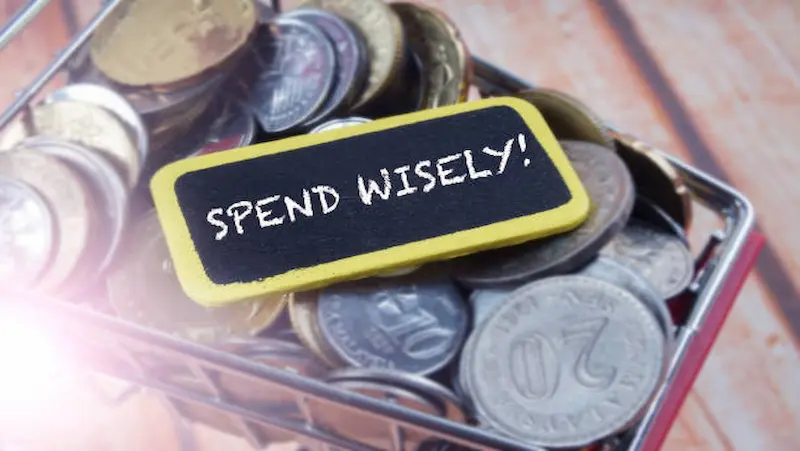Hey there! Let’s talk about something pretty crucial—lesson plans on money. It’s not just about coins and bills; it’s like handing them the keys to a secret code that’ll unlock their financial future. Trust me, these money lessons for kids aren’t just numbers and math; they’re life skills wrapped in a dollar bill. Stick around, and let’s unravel the significance of planting those money seeds early on.
Table of contents
- Lesson 1: Money Basics
- Lesson 2: Identifying Coins and Bills
- Lesson 3: Budgeting for Kids
- Lesson 4: Saving Money
- Lesson 5: Earning Money
- Lesson 6: Spending Wisely
- Lesson 7: Banking Basics
- Lesson 8: Credit and Debt
- Lesson 9: Investing for Kids
- Lesson 10: Money and Math
- Lesson 11: Taxes and Financial Responsibility
- Lesson 12: Giving Back and Charity
- Lesson 13: Financial Planning
- Lesson 14: Real-Life Money Scenarios
- Lesson 15: Role of Parents and Guardians
- Conclusion
- Frequently Asked Questions
Lesson 1: Money Basics

What is Money?
Money—it’s not just crumpled bills or jingling coins. It’s the grease that keeps the economic gears turning. At its core, money is a tool we’ve crafted to simplify the exchange of goods and services. It’s a pact we all agree upon: this piece of paper or digital number is worth a certain amount, and we use it to trade for things we want or need.
The Value of Currency
Ever wondered why a piece of paper can buy you dinner or a shiny gadget? It’s all about trust and confidence. The value of currency is built on the faith that others will honor it. Whether it’s a dollar, euro, or yen, its power lies in the collective belief that it holds real worth. So, that crumpled bill in your pocket? It’s not just paper; it’s a promise.
The History of Money
Let’s take a trip down memory lane. Before coins and bills, people traded goods directly—bartering chickens for wheat or cloth for tools. It worked, but it had its challenges. Cue the invention of money! From seashells to gold coins, societies found creative ways to represent value. Fast forward to today, where we’re tapping screens and swiping cards. Our journey from bartering to digital transactions is a fascinating evolution in human ingenuity.
Lesson 2: Identifying Coins and Bills

Recognizing Different Coins
Okay, let’s talk coins. Those little metallic circles jingling in your pocket aren’t just spare change; they’re mini works of art. Whether it’s the regal quarter or the elusive dime, each coin tells its own story. So, grab a handful, and let’s play detective. Notice the size, the faces, and the not-so-secret inscriptions. Spoiler alert: coins are like tiny history books you can spend!
Identifying Common Bills
Now, let’s unfold the mystery of paper – bills, to be precise. They come in all shapes and sizes, each flaunting the faces of some heavy hitters from the past. From George Washington on the one-dollar bill to the enigmatic Benjamin Franklin on the hundred, each bill has its VIP lineup. Take a moment to appreciate the artistry and history crammed into those rectangles. You’ll never look at a five-dollar bill the same way again!
Learning Their Values
Sure, a dollar is a dollar, but how many gumballs can it buy? Understanding the value of your hard-earned cash is crucial. Time to decode the cents and dollars game. Practice your mental math – it’s like a financial workout for your brain. Before you know it, you’ll be the master of deciphering price tags and making savvy money moves.
Lesson 3: Budgeting for Kids

Introducing Budgets
Hey there, parents and future financial wizards! Today, we’re diving into the exciting world of budgets with your little ones. Think of it as the superhero cape your kids wear to conquer the money maze. Introducing budgets to kids may sound like a tall order, but trust me, it’s all about turning financial education for kids into a fun adventure.
Creating a Simple Budget
Now, let’s talk about creating a budget. Imagine it as a roadmap for your child’s money journey. Start simple. Maybe your little one gets a weekly allowance. Sit down together and divvy up that allowance into categories like saving, spending, and sharing (because sharing is caring, right?). It’s like creating mini piggy banks for different purposes. Who knew budgeting could be so much like magic?
Understanding Needs vs. Wants
Here’s the golden nugget of budgeting wisdom: needs vs. wants. Explaining this to kids is like teaching them the secret language of money. Needs are like the essentials — the superhero gear that keeps them going. Wants? Well, those are the cool gadgets that make life even more awesome but aren’t absolutely necessary. Balancing needs and wants is like finding the perfect recipe for financial success.
Lesson 4: Saving Money

The Importance of Saving
In the hustle and bustle of our daily lives, saving money management for kids often takes a backseat. However, it’s crucial to understand that saving isn’t just a financial task; it’s a lifestyle choice. Saving money provides a safety net, allowing you to weather unexpected storms and grasp opportunities when they arise. It’s a powerful tool for building a secure and stress-free future.
Setting Savings Goals
Saving without a goal is like sailing without a destination. To make your savings journey meaningful, set clear and achievable goals. Whether it’s a dream vacation, buying a home, or creating an emergency fund, having specific targets helps you stay motivated. Break down your goals into smaller, manageable steps, making the process less daunting and more rewarding.
Saving Strategies for Kids
Teaching kids about money early lays the foundation for a lifetime of financial savvy. Instead of a lecture, turn saving into a game. Introduce piggy banks or savings jars with labels like “Fun,” “Education,” and “Future.” Encourage them to allocate a portion of their allowance to each category. Not only does this instill the value of saving, but it also fosters a sense of responsibility.
Lesson 5: Earning Money

Chores and Allowance
Remember those days when doing the dishes felt like a chore? Well, turns out, those chores aren’t just about keeping the house tidy—they’re your first steps into the world of earning. Chores and allowances are like the training wheels for the bike of financial responsibility. By linking your efforts to a little extra pocket money, you start to grasp the idea that work leads to rewards.
Finding Opportunities to Earn
Life is full of opportunities, and the same goes for earning money. It’s not just about doing assigned tasks; it’s about spotting chances to make a difference and, in return, making some cash. Maybe it’s helping a neighbor with their garden or walking their dog. Look around, and you’ll find opportunities hiding in plain sight.
The Concept of Work and Earnings
Work isn’t just about punching a clock; it’s about contributing your skills and time to create value. The more value you bring, the more you’re likely to earn. This concept is the cornerstone of the working world. It’s not just about putting in the hours; it’s about how you can make those hours count.
Lesson 6: Spending Wisely

Making Thoughtful Purchases
Picture this: you’re eyeing that shiny new gadget, and it’s calling your name. Before you swipe that card or hand over the cash, take a moment. Is it a want or a need? Can you imagine your life without it, or is it just another dust collector on the shelf of forgotten purchases?
Making thoughtful purchases is like having a conversation with your future self. Will you regret this buy a week from now? A month? Be your own financial superhero and rescue your budget from unnecessary splurges.
Making Choices with Money
Money is a tool, not a magic wand. It won’t solve all your problems, but it can make life a bit smoother. The trick is to make choices that align with your goals. Want to travel the world? That daily gourmet coffee might need a downgrade to a homebrew. Eyeing a down payment on a house? Those weekend shopping sprees might be due for a rain check.
Every dollar you spend is a vote for the life you want. So, choose wisely. It’s not about restriction; it’s about freedom—freedom from financial stress and the shackles of impulse spending.
Role-Playing Spending Scenarios
Let’s add a touch of drama to our financial script. Imagine you have a limited budget for the month. Your friend invites you for a fancy dinner, and the temptation to say yes is strong. But wait! Roll the dice and see the consequences. Can you still pay your bills? Will your savings account give you the side-eye?
Role-playing spending scenarios is like trying on different outfits before a big event. You want the one that fits perfectly and makes you feel confident. Similarly, you want spending choices that align with your financial goals and leave you feeling secure.
Lesson 7: Banking Basics

Introduction to Banks
Think of banks as your financial companions, safeguarding your funds and providing convenient avenues for transactions. They’re the backbone of our monetary system, ensuring your money is safe and easily accessible.
Opening a Savings Account
Now, let’s talk about a practical step – opening a savings account. It’s like having a personal treasure chest that earns you interest over time. When you open a savings account, you’re giving your money a cozy home where it can grow while still being within arm’s reach.
To open one, just stroll into your local bank armed with some identification and a sense of purpose. The process is generally straightforward, and before you know it, you’ll have your very own savings account ready to go.
How Interest Works
Ah, the magic of interest – let’s demystify it. Interest is like a bonus your money earns just by hanging out in your savings account. The bank rewards you for letting them use your money by paying you a little extra.
So, the longer your money stays put, the more interest it accumulates. It’s a subtle yet powerful way to make your money work for you. Consider it the bank’s way of saying, “Thanks for choosing us to keep your money safe!”
Lesson 8: Credit and Debt

Explaining Credit and Loans
1. Credit, Simply Put: Credit is like borrowing confidence. It’s the trust that someone extends to you, believing you’ll pay them back. When you use credit, you’re essentially borrowing money, usually from a bank, to be paid back later. Credit can be a useful tool for achieving financial goals, like buying a home or starting a business.
2. Loans Unpacked: Think of loans as the friendly helpers that make big dreams possible. Whether it’s a student loan, car loan, or mortgage, loans provide the financial boost needed to reach significant milestones. But, it’s important to understand the terms—interest rates, repayment schedules, and fees—to make informed decisions.
Understanding Debt
1. The D-Word: Debt isn’t a four-letter word, but it can feel like it. Essentially, it’s the money you owe. While some debt can be strategic, like investing in education or a home, too much can become a burden. Understanding your debt, its interest rates, and repayment plans is key to staying in control.
2. Types of Debt: There are good and not-so-good debt. Mortgages and student loans are examples of investments in your future. Credit card debt, on the other hand, can quickly snowball. Distinguishing between the two helps you prioritize paying down the debts that matter most.
Responsible Borrowing
1. Borrow Wisely: Responsible borrowing is like choosing the right-sized backpack for your activities for financial literacy journey. Don’t burden yourself with more debt than you can comfortably carry. Consider your income, expenses, and future plans before taking on loans. This way, you build a solid foundation for financial success.
2. Credit Scores Matter: Your credit score is your financial report card. Maintaining a good credit score opens doors to better interest rates and financial opportunities. Pay bills on time, keep credit card balances low, and be mindful of how much credit you’re using compared to your limit.
Lesson 9: Investing for Kids

What is Investing?
Alright, kiddos, let’s break it down. Investing is like planting seeds in your money garden with the hope that they’ll grow into mighty money trees. It’s a way of making your money work for you. Imagine your piggy bank as a little plot of land, and when you invest, you’re planting seeds of cash that have the potential to sprout into more cash over time.
Basic Investment Options
Now, let’s talk about where you can plant those money seeds. There are a few cool places to consider:
1. Stocks: Think of stocks as pieces of a company. When you own a stock, you own a tiny bit of that company. It’s like owning a slice of your favorite pizza!
2. Bonds: Bonds are like IOUs. You lend money to a company or the government, and in return, they promise to give you back your money plus a little extra (interest) after a certain amount of time.
3. Mutual Funds: Imagine a team of superheroes (your money) joining forces to defeat financial villains. That’s what happens with mutual funds. They’re a mix of stocks, bonds, and other cool stuff.
The Power of Compound Interest
Now, here’s where it gets super interesting – compound interest. It’s like a magical spell that makes your money grow faster and faster. Let’s say you invest $10, and it earns $2. The next time, you earn interest not just on your original $10, but also on the $2 you earned before. It’s like a snowball rolling down a hill, getting bigger and bigger.
Lesson 10: Money and Math

Math Skills and Money
Ever wondered how strong your math game is when it comes to handling money matters? Well, you’re about to find out. From budgeting to calculating discounts, having solid math skills is like having a superpower in the financial world. So, dust off those multiplication tables and get ready to conquer the world of numbers.
Money-Related Math Problems
Let’s face it—math can be a bit daunting, but when you throw money into the mix, suddenly it becomes a thrilling challenge. We’ll be tackling real-world scenarios where math is your trusty sidekick. Whether it’s figuring out savings goals or solving for the best deals, these problems are the superheroes of your everyday life.
Fun Math Games with Money
Who said learning can’t be fun? We’ve got some tricks up our sleeves with entertaining math games that involve everyone’s favorite topic—money! From interactive budgeting games to competitions on saving for that dream purchase, get ready to turn your math lessons into a lively game night.
Lesson 11: Taxes and Financial Responsibility

Intro to Taxes
Let’s face it, taxes are like that unexpected bill you find in your mailbox after an online shopping spree – inevitable. But fear not! Understanding taxes is like finding the secret code to unlock financial freedom. Taxes fund the roads we drive on, the schools we attend, and the safety nets that catch us when life throws curveballs. It’s the superhero cape of our civic responsibilities.
The Responsibility of Filing Taxes
Now, filing taxes might sound as exciting as watching paint dry, but it’s a rite of passage in the adulting world. Filing your taxes is like telling Uncle Sam, “Hey, here’s what I earned, and here’s my fair share for the greater good.” Remember, it’s not just about crunching numbers; it’s about contributing to the collective pot that fuels our society.
Civic Financial Duties
Picture this: You pay your taxes, and in return, you get smooth roads, well-educated folks, and a safety net that catches you if you stumble. It’s the circle of civic financial duties, my friends. Our dollars are the fuel that powers the engine of progress. So, don’t view taxes as a burden; think of them as your contribution to building a better world.
Lesson 12: Giving Back and Charity

Teaching Kids About Giving
Imagine planting seeds of kindness early on. Teaching kids about giving isn’t just a lesson; it’s a legacy. It’s about molding young minds into compassionate beings who understand the joy of sharing. It’s a lesson that goes beyond books, teaching them the profound joy of making someone else’s day a little brighter.
Donating and Volunteering
Donating isn’t just about money; it’s about investing in the collective heartbeat of humanity. Volunteering isn’t just giving time; it’s offering a piece of your soul to a cause. Lesson 12 beckons us to step outside ourselves and be part of something bigger. Whether it’s donating a warm coat or lending a hand at a local shelter, the act of giving becomes a silent revolution that speaks volumes.
Developing Empathy
Empathy, the quiet hero of Lesson 12, bridges the gap between ‘me’ and ‘we’. It’s about understanding without judgment, and feeling without reservation. Developing empathy isn’t a soft skill; it’s a powerful force that transforms us into better versions of ourselves. It’s the secret ingredient that turns charity into a profound human connection.
Lesson 13: Financial Planning

Creating a Financial Plan
Think of a financial plan as your treasure map. It’s not just about budgeting; it’s about charting a course for your financial future. Start by setting realistic goals – short-term and long-term. Break them down into manageable steps, creating a roadmap that keeps you on track. Remember, a good financial plan is not about restricting yourself; it’s about empowering yourself to make informed decisions.
Emergency Funds for Kids
We’ve all heard about emergency funds for adults, but what about the little sailors in our lives? Kids can encounter financial storms too, and having a lifeboat ready can make all the difference. Consider creating a small emergency fund for your kids – a piggy bank for unexpected expenses or opportunities. Teaching them about saving early fosters a sense of responsibility and prepares them to navigate their own financial seas in the future.
Long-Term Financial Goals
Setting sail without a destination is risky, and the same goes for our financial journey. Lesson 13 emphasizes the importance of establishing long-term financial goals. Whether it’s buying a home, funding education, or retiring on a tropical island, envision where you want to be in the distant future. This clarity not only motivates you but also shapes your financial decisions today.
Lesson 14: Real-Life Money Scenarios

Simulating Real-World Financial Situations
No more hypotheticals and abstract theories. This lesson throws you into the ring of real-world financial scenarios. Imagine scenarios like unexpected medical expenses or car repairs – the kind of curveballs life loves to throw. The goal is not to scare you but to equip you with the tools to navigate these situations with confidence.
Practical Problem Solving
Here’s where theory meets the road. Lesson 14 is all about practical problem-solving. You’ll find yourself crunching numbers, making budget adjustments, and maybe even doing a bit of financial juggling. The emphasis is on finding solutions that work for you, not just textbook answers.
Handling Money in Everyday Life
Let’s talk about the everyday stuff. Lesson 14 tackles the basics – from grocery shopping on a budget to understanding credit card for kids statements. It’s not about becoming a financial wizard overnight but about feeling empowered in your day-to-day financial decisions.
Lesson 15: Role of Parents and Guardians

Parental Guidance in Money Education
Picture this: your parents as the unsung heroes of your financial saga. From the jingle of pocket money to the complexities of budgeting for kids, they’re the silent architects shaping your money mindset. It’s more than just teaching you to count dollars and cents; it’s about weaving a narrative around responsible spending, saving for dreams, and understanding the dance of supply and demand.
Leading by Example
Remember those childhood moments when your folks huddled over bills, discussed investments, or planned for the future? Turns out, those weren’t just mundane adult talks. Parents, unknowingly, act as financial mentors by showcasing real-world decision-making. It’s the classic case of actions speaking louder than words. So, next time you catch your old man budgeting or your mom comparing prices, know that they’re passing down valuable wisdom.
Creating a Positive Financial Environment
Ever felt a vibe when you walk into a room? Well, your financial atmosphere is no different. Parents, you’re the conductors orchestrating the symphony of money conversations at home. Fostering a positive environment around finances makes it easier for young minds to embrace money education. Whether it’s celebrating small savings victories or navigating through financial setbacks, the way you tackle these moments paints a lasting portrait for your budding financial wizards.
Conclusion
In the journey of empowering our kids with lifelong money skills, we sculpt not just financially savvy individuals, but architects of their own futures. By instilling the values of fiscal responsibility and smart decision-making early on, we are not merely shaping wallets; we are nurturing a generation capable of navigating the complex tapestry of life with resilience and wisdom. The investment in their financial education today is the promise of a more empowered, confident, and self-reliant tomorrow.
To get your hands on more educational and free resources on coding for kids, robotics for kids, financial education for kids, etc., do check out the BrightCHAMPS Page now!
To get your hands on more such articles, educational content, and free resources on coding for kids, robotics courses, game development, etc., check out the BrightCHAMPS Blog Page now!
Frequently Asked Questions
A1: Essential components in devising potent lesson plans on money include establishing clear learning objectives, incorporating real-life scenarios, integrating diverse teaching methods, and ensuring a progression of complexity to cater to different learning styles.
A2: To create engaging lesson plans on money for elementary students, infuse hands-on activities, incorporate visual aids, leverage interactive games, and foster a collaborative learning environment. Align the content with their everyday experiences to enhance relevance.
A3: Useful resources for developing money-centric lesson plans on money encompass age-appropriate books, multimedia presentations, financial literacy games, virtual simulations, and guest speakers with expertise in finance. These materials enrich the learning experience and provide practical insights.
A4: Yes, tailored lesson plans on money for preschoolers can introduce basic financial concepts through simple activities like counting and sorting coins, storytelling with financial themes, and using play money. These activities instill foundational concepts in an engaging and developmentally appropriate manner.
A5: Educators can augment interactivity by incorporating hands-on activities, facilitating group discussions, integrating technology, and connecting financial concepts to real-world situations. Relatability can be heightened by using relatable examples, incorporating student interests, and promoting a collaborative learning environment that encourages students to share their perspectives and experiences.


 We are an army of educators and passionate learners from BrightChamps family, committed to providing free learning resources to kids, parents & students.
We are an army of educators and passionate learners from BrightChamps family, committed to providing free learning resources to kids, parents & students.












